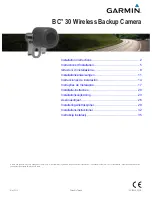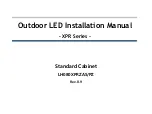
12
Leica World News
Two versatile lenses are sufficient as the basic outfit for R cameras: the LEICA VARIO-ELMAR
f/3.5 – 4/21– 35 ASPH. and the LEICA VARIO-ELMARIT f/2.8 – 4.5/28 – 90 mm ASPH.
U N I V E R SA L L E N S E S
Ideal for traveling. Zoom lenses make photography easier and reduce the amount
of equipment to the essential. Two lenses for the R series that make a perfect team.
T H E R E ’ S A L OT
to be learned from pro-
fessionals. Press photographers have to
get in close to the action if their pictures
are to tell exciting stories. That’s why they
prefer to use short focal lengths. The results
are densely packed, powerful photos that
make you feel as if you are part of the
action. It is the wide-angle view in particu-
lar that creates a sense of immediacy and
therefore a certain authenticity. The photo
becomes the “truth”, and, because the lens
only has to be stopped down slightly for the
depth of field to reach from the foreground
to infinity, it has a lot to tell. A successfully
composed wide-angle photo is like a well-
written essay.
One of Leica’s lenses for its R SLR system
is an ideal tool. The LEICA VARIO-ELMAR-R
f/3.5 – 4/21 – 35 mm ASPH. embraces the
most common wide-angle focal lengths of
21, 24, 28 and 35 mm while measuring a
mere 66 mm. Yet due to the complex design,
the imaging performance is comparable
with that of fixed focal length lenses.
If you have to take photos in a large crowd
where you hardly have room to move, you
can track moving objects, zoom in at the
right moment and take a frame-filling photo.
For the reporter, who has little time to
react to what is happening, this is a big
help. And because the Vario-Elmar-R is
designed as a dual-ring zoom with the
focus set by the first ring and the focal
length by the second, there’s no risk of
making the wrong adjustment when in a
hurry. But what is it that determines the
success of a feature on a specific subject?
Certain parts of the picture need highlight-
ing without losing the sense of the whole.
The portrait of an artist in the middle of his
studio, for example. This is where the wide-
angle zoom comes into its own, allowing
the photographer to get close to the per-
son and make him or her stand out from
the width and depth of the surrounding
space. The contrasts of the fore- and back-
ground have the same priority, no informa-
tion is lost. What, for example, would a fam-
ily or club celebration be without the group
photo to remember it by? Indoor group por-
traits in particular are the domain of the
wide-angle zoom. Just imagine travel pho-
tography – impossible without a wide-angle.
The dune landscapes of the Sahara, the
dramatic canyons in the west of the USA,
the towering mountain panoramas of the
Alps – only a wide-angle lens can create
the epic effect of depth stretching into
infinity. And in contrast to this, of course,
the narrow ravines of Bryce Canyon with its
eroded bends as in our illustration. It can
only be accessed in a few places, so cer-
tain views can only be chosen and deter-
mined with a wide-angle zoom. The optical
quality of the lens is particularly noticeable
at the edges of the photo. Which naturally
makes it ideal for interior architectural
shots, too.
If you add another zoom lens to your cam-
era outfit, you’ll be equipped for (almost)
everything. From the medium wide-angle
to the slight telephoto range, the LEICA
VARIO-ELMARIT-R f/2.8 – 4.5/28 – 90 mm
ASPH. is a virtually universal lens that pho-
tographers will particularly appreciate when
traveling. Because it combines all common
focal lengths in terms of focal length spread
in one lens, it can be used as a standard
lens that doesn’t need changing on the
move. You can choose from a wide shot all
the way through to a picture of a child’s
laughing face by simply zooming the
required frame. In portrait photography the
lens is unbeatable. Combining a large
aperture with a long focal length setting,
you can separate people from the back-


































